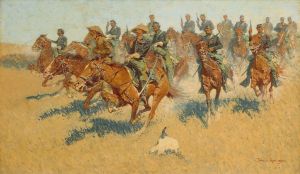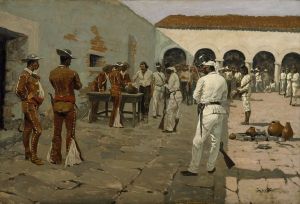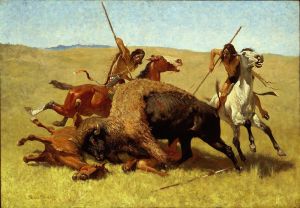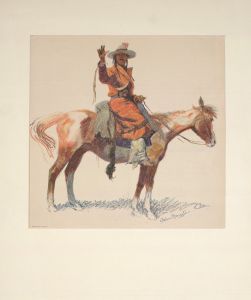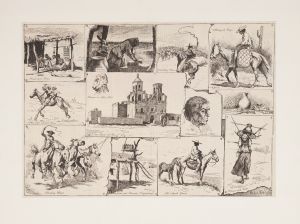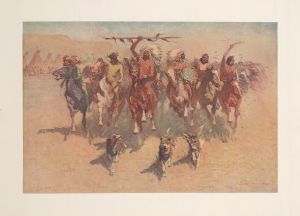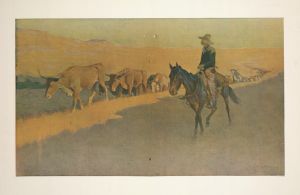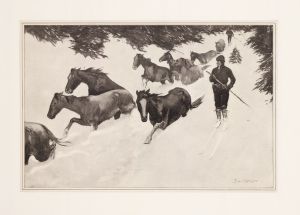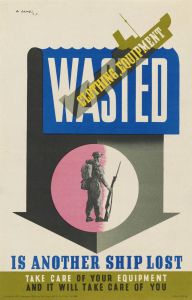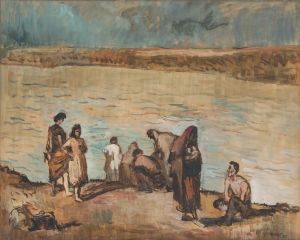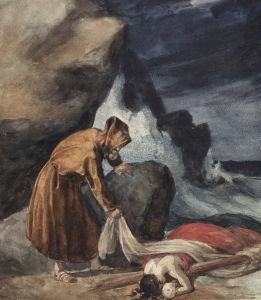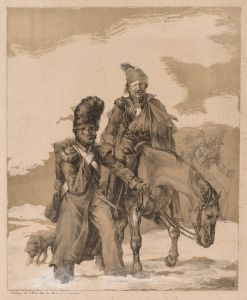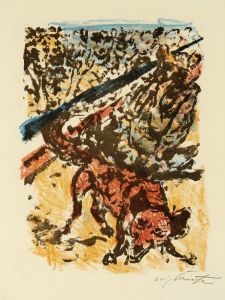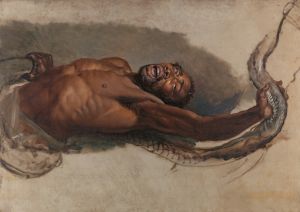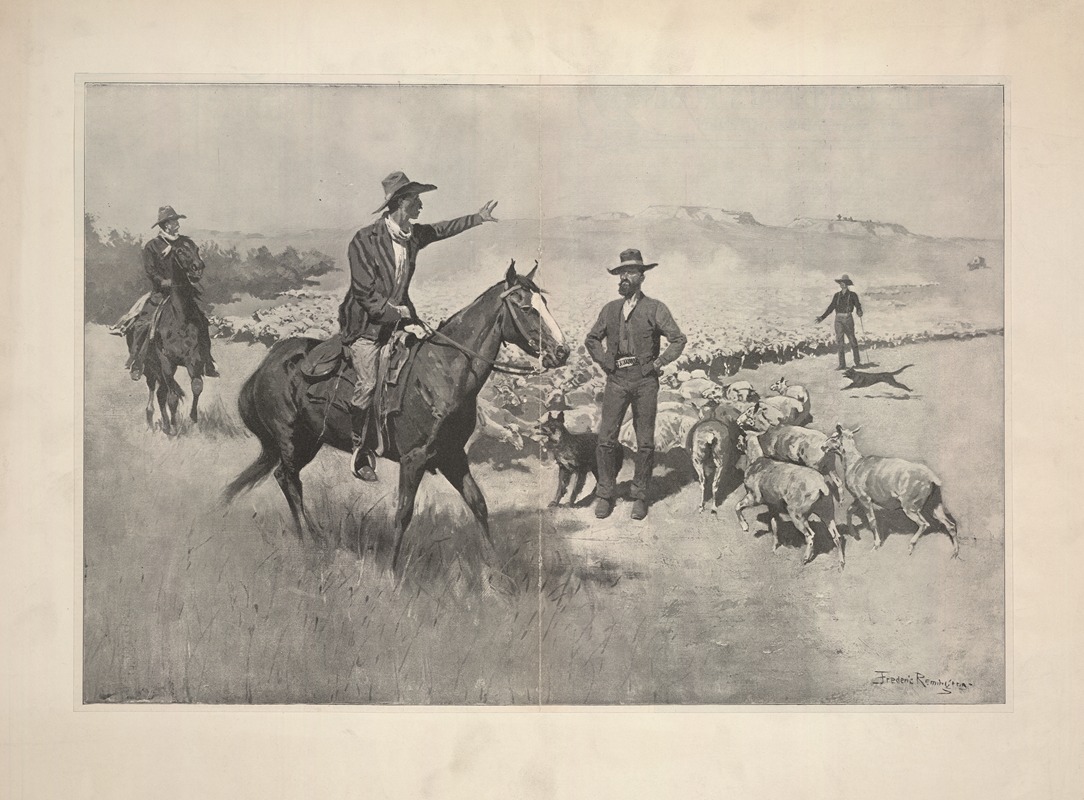
The Drought in the Southwest Cattlemen Warning Sheep-herders Away from their Water
A hand-painted replica of Frederic Remington’s masterpiece The Drought in the Southwest Cattlemen Warning Sheep-herders Away from their Water, meticulously crafted by professional artists to capture the true essence of the original. Each piece is created with museum-quality canvas and rare mineral pigments, carefully painted by experienced artists with delicate brushstrokes and rich, layered colors to perfectly recreate the texture of the original artwork. Unlike machine-printed reproductions, this hand-painted version brings the painting to life, infused with the artist’s emotions and skill in every stroke. Whether for personal collection or home decoration, it instantly elevates the artistic atmosphere of any space.
"The Drought in the Southwest Cattlemen Warning Sheep-herders Away from their Water" is a painting by the renowned American artist Frederic Remington, who is best known for his depictions of the American West. Remington's work primarily focused on the late 19th and early 20th centuries, capturing the essence of frontier life, including cowboys, Native Americans, and the U.S. Cavalry.
This particular painting reflects a scene that was common during the period of westward expansion in the United States. The title itself suggests a narrative of conflict and survival, as cattlemen, who were often ranchers owning large herds of cattle, are depicted warning sheep-herders away from their water sources. This scenario was a frequent occurrence in the arid regions of the American Southwest, where water was a scarce and highly valued resource.
During the late 19th century, the American Southwest experienced significant droughts, which exacerbated tensions between different groups of settlers. Cattlemen and sheep-herders often found themselves at odds due to their differing needs and the environmental impact of their livestock. Cattle required large amounts of water and grazing land, while sheep, which graze closer to the ground, could damage the grasslands, making them unsuitable for cattle grazing. This led to what was known as the "range wars," a series of conflicts over land and water rights.
Remington's painting captures the essence of these tensions, illustrating the harsh realities of life in the Southwest during this period. The artwork likely portrays a dramatic encounter, emphasizing the rugged and often lawless nature of frontier life. Remington's style is characterized by dynamic compositions and a keen attention to detail, which bring the scene to life and convey the urgency and desperation of the situation.
Frederic Remington was a prolific artist, and his works were instrumental in shaping the popular image of the American West. His paintings, illustrations, and sculptures were widely published in magazines and books, making him one of the most influential artists of his time. Remington's ability to capture the spirit of the West with authenticity and drama has left a lasting legacy in American art.
While specific details about "The Drought in the Southwest Cattlemen Warning Sheep-herders Away from their Water" may not be extensively documented, the painting fits within the broader context of Remington's oeuvre. His works often depicted the challenges and conflicts of frontier life, providing a visual narrative of a transformative period in American history.
In summary, this painting by Frederic Remington serves as a historical representation of the conflicts over natural resources in the American Southwest, highlighting the struggles faced by settlers during a time of environmental and social challenges.





